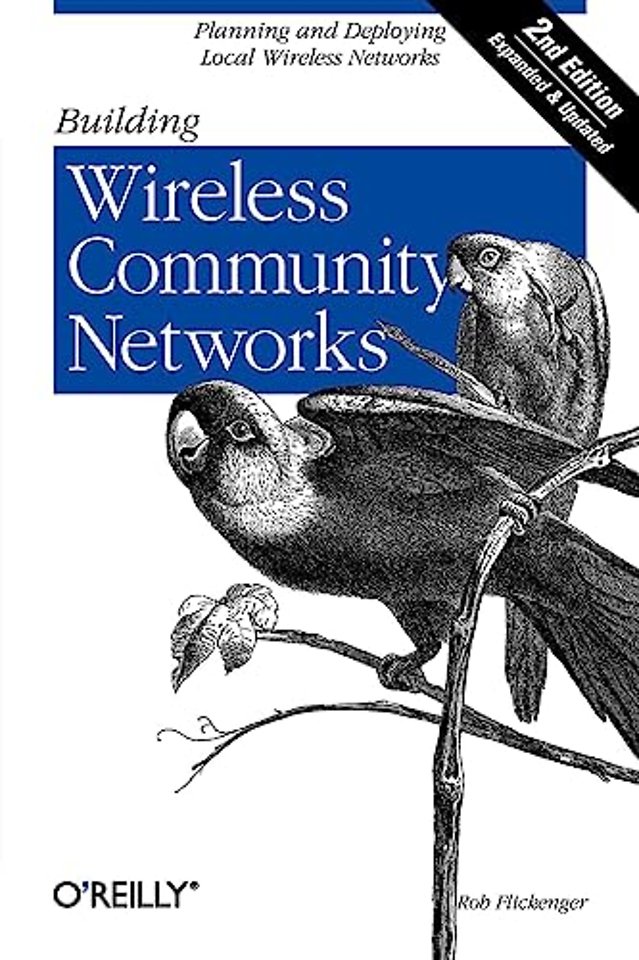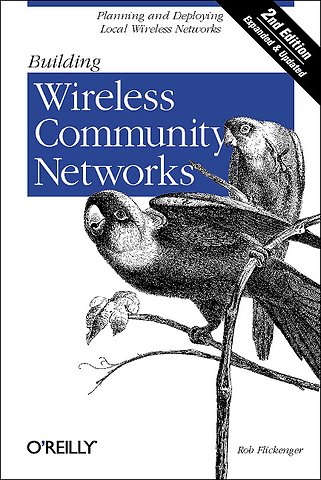Building Wireless Community Networks, 2nd Edition
Samenvatting
'Building Wireless Community Networks' is about getting people online using wireless network technology. The 802.11b standard (also known as WiFi) makes it possible to network towns, schools, neighborhoods, small business, and almost any kind of organization. All that's required is a willingness to cooperate and share resources.
The first edition of this book helped thousands of people engage in community networking activities. At the time, it was impossible to predict how quickly and thoroughly WiFi would penetrate the marketplace. Today, with WiFi-enabled computers almost as common as Ethernet, it makes even more sense to take the next step and network your community using nothing but freely available radio spectrum.
This book has showed many people how to make their network available, even from the park bench, how to extend high-speed Internet access into the many areas not served by DSL and cable providers, and how to build working communities and a shared though intangible network. All that's required to create an access point for high-speed Internet connection is a gateway or base station. Once that is set up, any computer with a wireless card can log onto the network and share its resources.
Rob Flickenger built such a network in northern California, and continues to participate in network-building efforts.
His nuts-and-bolts guide covers:
- Selecting the appropriate equipment
- Finding antenna sites, and building and installing antennas
- Protecting your network from inappropriate access
- New network monitoring tools and techniques (new)
- Regulations affecting wireless deployment (new)
- IP network administration, including DNS and IP Tunneling (new)
His expertise, as well as his sense of humor and enthusiasm for the topic, makes 'Building Wireless Community Networks' a very useful and readable book for anyone interested in wireless connectivity.
Specificaties
Inhoudsopgave
1. Wireless Community Networks
Why Now?
The WISP Approach
The Cooperative Approach
About This Book
2. Defining Project Scope
The Standards
Hardware Requirements
Site Survey
802.11b Channels and Interference
Topographical Mapping 101
3. Network Layout
Layer 1 (Physical) Connectivity
Wired Wireless
Vital Services
Security Considerations
Summary
4. Using Access Points
Access Point Caveats
The Apple AirPort Base Station
Access Point Management Software
Local LAN Access
Configuring Dialup
NAT and DHCP
Bridging
WEP, MAC Filtering, and Closed Networks
Roaming
Channel Spacing
5. Host-Based Networking
Anatomy of a Wireless Gateway
6. Long-Range Networking
Topo Maps 102: Geographical Diversity
Antenna Characteristics and Placement
7. Other Applications
Software
Point-to-Point Links
Point-to-Multipoint Links
Home-Brew Antennas
Redundant Links
Repeaters
Security Concerns
NoCatAuth Captive Portal
Fun with IP
In Closing
8. Radio Free Planet
Universal Wireless
The Future
9. Radio Free Sebastopol
OSCON 2000
The Campus
Coffee, Coffee, Coffee
Online From Home, No Strings Attached
Seattle Wireless
NoCat
The Community Takes Notice
The Portland Summit
And So On
A. Regulations Affecting 802.11 Deployment
B. Path Loss Calculations
C. Simple Scheme Management
Index
Anderen die dit boek kochten, kochten ook
Net verschenen
Rubrieken
- aanbestedingsrecht
- aansprakelijkheids- en verzekeringsrecht
- accountancy
- algemeen juridisch
- arbeidsrecht
- bank- en effectenrecht
- bestuursrecht
- bouwrecht
- burgerlijk recht en procesrecht
- europees-internationaal recht
- fiscaal recht
- gezondheidsrecht
- insolventierecht
- intellectuele eigendom en ict-recht
- management
- mens en maatschappij
- milieu- en omgevingsrecht
- notarieel recht
- ondernemingsrecht
- pensioenrecht
- personen- en familierecht
- sociale zekerheidsrecht
- staatsrecht
- strafrecht en criminologie
- vastgoed- en huurrecht
- vreemdelingenrecht







